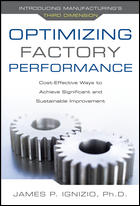Defining Variability
Special cause variation generally comes as a surprise to the system.

It’s safe to say that all quality practitioners are familiar with the control charting terms “common cause” and “special cause” variation. However, how many have really thought about their interpretations and associated action plans which could also add to variation? To examine this line of thought, we need to review what I’ll call the Shewhart approach and then the Deming approach.
In the early 1920s, Dr. Walter A. Shewhart of Western Electric Company developed a theory that there are two components to variation: an inherent component from random variation he called chance-cause variation and an intermittent variation due to special cause which he referred to as assignable cause variation.
Dr. Shewhart’s improvement approach was that assignable causes could be removed with an effective diagnostic program. At the same time, he became convinced that random (chance-cause) variation could not be removed without making basic process or product changes.
From his studies, Dr. Shewhart concluded that while every process displays variation, some processes display controlled variation that is natural to the process, while others display uncontrolled variation that is not present in the process causal system at all times. From this work he developed the standard control chart.
His control chart technique used three standard deviation limits of the sampling distribution to separate the chance (common) cause component from assignable (special) causes. The control chart techniques were so successful they came into wide use in the 1940s because of the war production efforts. While continuing his work Western Electric was later credited with adding sequence and runs tests to control charts.
Dr. W. Edwards Deming became familiar with Shewhart’s control chart theory and they began a long collaboration on the issue of control chart theory. Dr. Deming gained fame for his work with Japan in its process improvement efforts after World War II. Later in his career, Dr. Deming made significant progress helping American industries become more competitive. Among his documented work, Deming commented on common cause and special cause. A few of his thoughts include:
“We shall speak of faults of the system as common causes of trouble, and faults from fleeting events as special causes.”
“Confusion between common causes and special causes leads to frustration, and leads to greater variability and higher costs, exactly contrary to what is needed.”
“A fault in the interpretation of observations is to suppose that every event (defect, mistake, accident) is attributable to someone, or is related to some special event.”
“I should estimate that in my experience, most troubles and most possibilities for improvement add up to proportions something like this: 94% belong to the system (management), 6% are special.”
From the above discussions and statements, both these dignitaries’ conclusions could be paraphrased as follows. Shewhart: A special cause is an assignable cause that could be internal or external to the management system. Deming: A special cause is an unusual event external to the management system.
Why is this relevant? This basic philosophic difference between these two quality experts can impact process tracking. As an example, consider that a key process input variable (KPIV) affects a process output. You might not know how this KPIV affects your process or even if it adversely affects your customer. For instance, this type of KPIV could be created from differences between daily raw material batches which differ by day of the week.
The question is whether or not these KPIVs should be considered a common cause or special cause event. A Deming approach would view normal output levels from this KPIV as common cause; however, since this variable is assignable, the Shewhart approach would consider it as special cause.
The point is that the distinction between the two approaches is not trivial; a business would approach the solution differently depending on which approach was indicated. It is important, therefore, to understand the implications of the two alternatives before making a decision as to actions, or inactions, to be taken.
Decisions like this are encountered on a daily basis and the quality practitioners must thoroughly understand the implications of their recommendations to resolve variation. Maybe the best approach to identifying the difference between common and special cause variation is something one of my former mentors used to stress: ‘Special cause variation generally comes as a surprise because it acts as a signal to the system that something’s gone astray.’
Looking for a reprint of this article?
From high-res PDFs to custom plaques, order your copy today!






